How Do I Defeat Hidden Microphones And Voice Recorders?
When Defeating Hidden Microphones And Voice Recorders, Which Is better To Use White Noise Or Pink Noise?
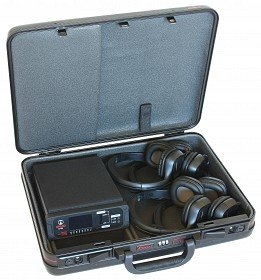

There are systems that advertise White Noise and some that advertise Pink Noise; this section will address the difference.
White Noise has equal energy per frequency – the energy frequency spectrum is basically flat. Since human hearing responds in a logarithmic manner (see the previous graph), White Noise sounds to a human as if the high frequencies are loudest (the audio sounds “Brighter”).
Pink Noise has equal energy per frequency octave. The noise energy level decreases as frequency increases, or for example, there is the same amount of energy in each of the following frequency bands:
100 to 200 Hz
200 to 400 Hz
400 to 800 Hz
800 to 1600 Hz
Pink Noise has a frequency roll-off similar to the human hearing capability and therefore sounds less bright and richer at the lower frequencies when compared to White Noise.
The Question: What is the best type of noise to use as an eavesdropping countermeasure?
The Solution: Defeat intelligibility of the spoken word in the surrounding perimeter (rather than simply create a pleasant sound environment). This goal generally takes more power and sound
energy in the perimeter of the protected space.
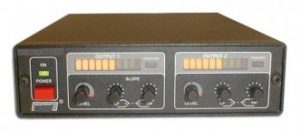
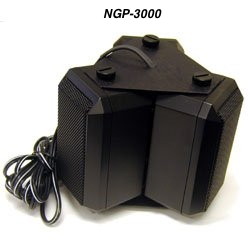
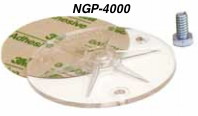
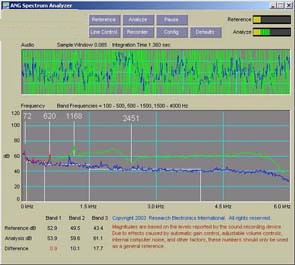
Therefore, a White Noise system is more generally appropriate because energy is evenly distributed and the higher frequency components (and thus the intelligibility) of the spoken word are more greatly impacted by the energy level in a white noise system.
What Is Sound Masking?
Sound masking is the addition of natural or artificial sound (such as white noise or pink noise) into an environment to cover up unwanted sound by using auditory masking. This is in contrast to the technique of active noise control. Sound masking reduces or eliminates awareness of pre-existing sounds in a given area and can make a work environment more comfortable, while creating speech privacy so workers can better concentrate and be more productive. Sound masking can also be used in the outdoors to restore a more natural ambient environment.
Sound masking can be explained by analogy with light. Imagine a dark room where someone is turning a flashlight on and off. The light is very obvious and distracting. Now imagine that the room lights are turned on. The flashlight is still being turned on and off, but is no longer noticeable because it has been “masked”. Sound masking is a similar process of covering a distracting sound with a more soothing or less intrusive sound.
A document was published in 1980 by the Defense Intelligence Agency. It concerned protection of secure facilities from deliberate audio surveillance; sound masking was one means of protection. A defense contractor developed a vibration device that could be attached to various surfaces such as doors, walls, and windows, to provide sound masking. In the 1980s, the another company developed a speaker that could not be distinguished from a fiberglass ceiling tile. The invisibility aspect was favorable to architects. The attempt was made to use this speaker for sound masking, but the cost and the sound radiating characteristics limited its use for that purpose.
The word “mask” means merely to cover up, or disguise, something. That something is not changed, but simply hidden. Physical masks cover the face of the wearer. Deodorants mask odors; they do not eliminate them. One-way windows mask the persons on the other side so they are not visible. Sound can mask other sounds to cover them up. In every case, the objective is to hide something that exists, it does not eliminate them. Many people have heard of noise cancellation, but incorrectly believe that it is a form of sound masking. In noise cancellation the sound is actually eliminated not covered up. So why not use it? Unfortunately, this technique works only within spatially constrained areas, such as headphones, and is not applicable to entire rooms. What is sound masking trying to mask? It covers up conversations, by raising the background level. That level must be above the sound of conversations most of the time. How is that determined? For every situation there is an optimum background sound level, just as there is an optimum light level. In the home that sound level is low, and at sporting events that level is high. The function of sound masking is to bring the background level up to the optimum; the level that provides fewer distractions without being a distraction itself. This requires persons experienced with this technique to find that optimum.
Why Use Sound Masking?
Sound masking has some unique advantages over traditional methods of reducing distracting sounds.
(1). Sound masking is dynamic (variable) as are the sounds it is intended to block. Building elements that provide sound attenuation are static (fixed) and cannot adapt to intruding sounds that change in level. Masking can vary from location to location as well as from time to time, to adapt to changing environmental conditions.
(2). Sound masking is by far the least expensive tool for providing privacy.
(3). Sound masking systems are special audio systems that create spatially uniform sound levels.
(4). Sound masking works at the listener’s ear and is independent of the building structure (acoustically) so concerns about how distracting sounds get from one place to another is unimportant. Structural modifications require such knowledge and are more costly.
Applications of Sound Masking
(1). Closed Offices
Closed offices and conference rooms often appear to provide confidentiality but actually may not. Lightweight, or movable, walls are more sound transparent and most do not extend to the ceiling deck, so speech can pass into the ceiling plenum and then to the next office. Sound masking can be used to make up for such acoustical weaknesses.
(2). Open Offices
Open offices can have a background sound level that is too low. Sound level restrictions of air handling units are increasingly stricter. The conversations of others can be clearly understood. Sound masking raises the background level to make up for the absence of walls that that would otherwise block the sound.
Placing Speakers In A Suspended Ceiling Plenum
The plenum is the space between a suspended ceiling and the structural deck above it. Since most offices have such spaces, sound masking speakers are commonly added there. For open offices, uniformity of the sound masking in the inhabited area is important and is largely determined by the spacing of the masking speakers. Speaker arrays are generally rectangular. They generally face upwards to reflect sound from the deck and broaden the distribution of the sound to create a more uniform sound field. There are other factors that determine the horizontal spacing of speakers to assist in creating a uniform sound level below. The first is the nature of the ceiling material. Mineral tile ceilings have appreciable sound loss so speaker spacing of 15 feet is common. Fiberglass ceilings, on the other hand, are highly sound absorptive but are more sound transparent, requiring speakers to be closer. The second factor is the depth of the ceiling plenum. The deeper the plenum, the further apart the speakers can be placed. The third factor, of somewhat lesser importance, is the height of the suspended ceiling itself. With higher the ceilings sound uniformity is improved, so speaker spacing can be increased.
In An Open Ceiling
In some offices, particularly warehouses that have been converted to office space, there is no ceiling plenum. Masking speakers are hung in a similar manner to those above suspended ceilings but the speaker spacing and height is different. Typically, the speakers are mounted higher and the spacing between them is closer. The height of the structural ceiling above is a large factor in spacing, as is the presence or absence of sound absorbing materials on the ceiling surface. Reasonably good uniformity of sound masking can be achieved. Some office designs employ the use of scattered (as opposed to continuous) ceiling tiles (clouds). Careful design is needed to achieve reasonable sound masking uniformity.
Under Raised Floors
Sound masking speakers can be placed under raised floors in offices that utilize them. To carry the weight above, the floor material is structurally strong and offers high attenuation of any sound below it. Experience has shown that not only is the uniformity of the sound above exceptionally good, but occupants are hard pressed to determine where the sound source is located (good diffusion -See Section 3.7.6). The figure on the right shows masking sound levels at 48 inches above the floor; they are all within 1 dB of each other. One direction is a line between the speakers; the other direction is a line lateral to the speakers starting at the midpoint. If the depth of the cavity is sufficient, normal sound masking speakers can be used, otherwise small speakers can be used; they fit into a cavity as small as 2 inches and radiate sound horizontally. If the cavity is used as a return air duct, care must be taken to shield the opening.
Face Down In A Suspended Ceiling
The masking sound travels directly to a listener without any intervening sound attenuating materials. This arrangement, with speakers mounted in a suspended facing down, has been typical for paging systems, but is being used more recently in some sound masking applications. The speaker for this application must be specially designed to have a wider spread of sound than other speakers to make up for the lack of intervening material. They are often called “direct field” speakers to distinguish them from the other arrays that radiate sound indirectly. They can be small loudspeakers or entire ceiling tiles installed with hidden speakers. Although the speaker locations in the above sections are preferred, there are situations where use of direct field speakers is necessary. An alternative location for such speakers is wall mounting.
In Unusual Locations
In some older buildings the above locations do not exist. Vibration maskers have been applied in a number of facilities to the air supply duct, radiating masking through the air diffusers. In other cases, maskers were hidden above air ducts in open ceilings. Speakers have been placed under desks, under open office work surfaces, behind paintings, or on open office furniture panels.
Medical Facilities
Regulations:
The Congress of the United States passed the Health Insurance Portability and Accountability Act (HIPAA) into law. It mandates that individually identifiable patient health information be protected. Although written and computer files are obviously to be protected, verbal information must also be protected. “Covered entities” (those who must comply with the law) must make reasonable efforts to safeguard patient information from being overheard. The law itself gives no specific guidance on how this is to be accomplished, but a document released by the Department of Health and Human Services provides some clarification. It includes, as part of the protection, the phrase “health information whether it is on paper, in computers, or communicated orally”. The Office of Civil Rights also has published a document on this issue, stating that the law does not require retrofitting spaces, such as soundproofing of rooms, in order to comply. As a result, many medical facilities have already realized that compliance is wise and have begun retrofitting their facilities. Experience has suggested that most hospital rooms do not need sound proofing, but can benefit from sound masking.
Sound Masking In Medical Facilities
The finding of researchers has shown that the privacy problem in medical facilities is very similar to that in open offices. As a result, sound masking has been used beneficially in a number of locations. Patient rooms, corridors, and nursing areas of hospitals are prime locations. Sound masking can be used in retirement and rehabilitation centers. It is also beneficial in medical suites or patient contact areas of medical insurance providers. Pharmacies can also provide confidential privacy at contact areas with sound masking.
Secure Facilities
Secure facilities require more care when sound masking is used. For commercial offices and even for medical facilities, the listener for confidential conversations are presumed to be casual or accidental. For secure facilities, the listener is presumed to be deliberate and may make use of sophisticated technical listening devices. Many government facilities have made use of structural solutions, i.e., rooms (room-within-a-room) that are shielded from vibration, acoustical, and electromagnetic surveillance. Unfortunately, not all secret conversations take place in such rooms. A less obvious weakness in secure rooms is that modern listening devices can be placed in locations that the building structure cannot protect against (inside wall cavities or remote detection of window vibration). Another weakness in rooms of this type is that designers may presume speech is on a controlled, but low, level. Public address systems, speaker phones, and audio/video presentations require additional protection.
There are many unclassified government documents that define how secure rooms are to be designed. One type of facility is called a SCIF (Secure Compartmented Information Facility); there are others. There are likely classified documents as well. In almost all of the documents, sound masking is one recommended audio protection method. There is similar standard that applies to financial institutions.
Categories of Surveillance
There are two categories; each must be addressed differently. Uncontrolled areas are those where the persons attempting to protect themselves have little or no control over the surrounding environment. This might be all areas outside the building in which the secure room resides, such as parking lots or other public spaces where it is possible to gain access without detection. Controlled areas are those within the building where the occupant has a measure of control.
Types of Masking Signals
Unlike sound masking in offices or hospitals, it is necessary to consider that sophisticated listeners may have technology to recover speech buried in masking sound. To inhibit such devices, it may be necessary to provide layered audio protection; several different signals are mixed together. Non-stationary random noise should be the first layer; it provides more protection than standard sound masking generators. Music may be used as the second layer; it is buried below the random noise so it is actually inaudible to room occupants. A voice babble generator or actual speech samples may be used as a third layer. The fourth layer, the actual voices to protect, should be sufficiently buried.
Types of Masking Speakers
Standard masking speakers must be supplemented with vibration maskers for attachment to a number of surfaces.
Locations For Protection
Thee are a number of locations where surveillance of secure facilities can occur.
Windows
Windows generally are open to uncontrolled areas so require protection. Windows can convert interior speech to window vibration that can be detected remotely by laser or directional microphones. A vibration device attached to the window, and fed with sound masking, can be used to effectively block speech intelligibility.
Walls
Exterior walls are generally constructed of heavier material than interior walls and seldom need audio protection. Interior walls are a different story. Speech can excite a wall to vibrate and there are several locations from which conversations can be detected: remote from the wall with laser or directional microphones, on the far side of the wall with vibration detectors or direct listening, or within the wall cavity with vibration detectors or fiber optic microphones. Vibration sound masking devices can provide protection against these forms of surveillance when placed within the room to be protected and at the appropriate height and spacing, In effect, the wall becomes a masking speaker.
Doors
Doors are weak links in walls; they may be hollow or solid core, metal, or specially built for high sound attenuation. They can open to exterior uncontrolled areas or to internal controlled areas. Every door has a gap around its periphery that may have gaskets. Because carpeting is often used, there may be a significant gap at the bottom. Most surveillance of internal doors is accomplished by direct listening while other methods may be used for external doors. Because of the multiple paths of sound through and around a door, vibration sound maskers are used at appropriate locations on the door.
Ducts
Listening through air ducts is a time honored source of eavesdropping since almost all modern rooms have supply ducts that connect to a multiplicity of other rooms. Ducts can be effective speaking tubes; the speech attenuation is particularly weak in unlined metal ducts. In some cases, exhaust ducts will connect to uncontrolled spaces. Surveillance can be accomplished by direct listening or with probe microphones or vibration devices within the duct where they are not visible to inspection. Vibration sound maskers, appropriately located, are attached to metallic duct walls and use the duct wall as the masking radiator. External speaker maskers are used at appropriate positions to radiate sound into fiberglass ducts.
Piping
Normally, liquid filled pipes do not carry significant speech energy nor does conduit piping filled with wires. However, empty conduit pipes are excellent speaking tubes; vibration maskers are attached to them. In some facilities, vibration maskers have been attached to support pipes and columns.
Raised Floors
Raised floors are generally inaccessible for inspection so surveillance can be accomplished there. If the floor is part of the air handling system, probe microphones or fiber-optic microphones can be effective. If the floor is continuous, the high sound attenuation of the material makes surveillance with vibration detectors more advantageous since the stiff metal plates respond to speech. Although vibration maskers can be attached to the floor plates, the preferred protection is to use speaker maskers under the floor.
Plenum Ceilings
Secure rooms often have a suspended ceiling with a plenum above. Sound masking penetrates the ceiling material in open offices, so speech can go in the opposite direction into the plenum. It is likely that the perimeter walls extend to the structural ceiling. If the plenum is part of the air handling system or if there are cable run penetrations, probe microphones can be used for surveillance. If not, a small penetration can be made to insert these devices. As with commercial offices, plenum speaker maskers are installed.
Internal Loudspeakers
Many building codes require the presence of speakers in a secure room for emergency announcements. Although speakers are intended for creating sound, the speaker cone also responds to external sound and the coil generates a minute voltage characteristic of that sound. With proper sensing, that voltage can be converted to speech. Although it is possible to place a speaker masker next to the paging speaker the recommended solution is an optical isolator. It is essentially an audio diode; sound only goes one way.
Computer Keyboards
There is some evidence that the sound of key strokes can be detected to identify the characters being entered. A vibration masker placed under the keyboard will radiate sufficient masking to block surveillance without disturbing the user.
Effective Sound Masking Equals Acoustical Privacy
The primary goal of sound masking is privacy. In closed offices, conference rooms, or secure facilities the goal is confidentiality of speech. In open areas, the goal is sufficient privacy so occupants are free of distracting sounds, such as speech and other sources of sound.
Successful sound masking results in privacy. Thus, it is necessary to appreciate how the end result contributes to privacy and how sound masking as a privacy tool can effectively accomplish this goal.
Recommended Reading:
* How Do I Know If I’ve Been Bugged?
* Prevention and Detection of Electronic Harassment and Surveillance (PDEHS)
* Targeted Individuals

Leave a Reply
You must be logged in to post a comment.